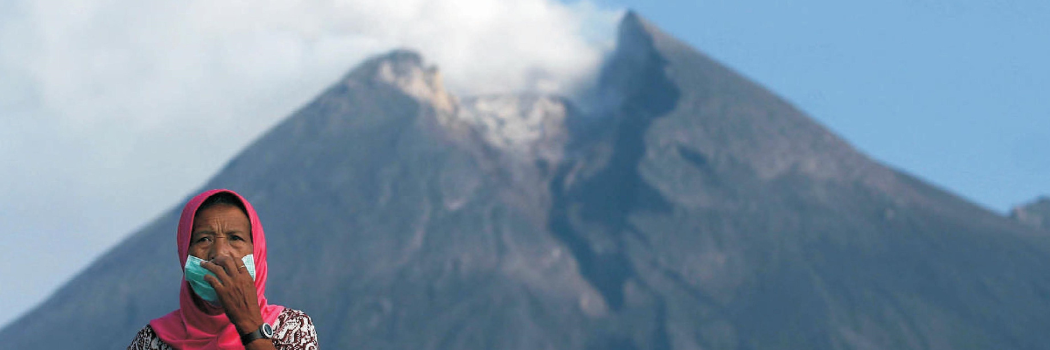Protecting global communities from harmful volcanic emissions

Our Earth Sciences research is helping communities living near active volcanoes, and the agencies protecting them, to reduce exposure to volcanic emissions.
Professor Claire Horwell’s pioneering research has paved the way forward for global and community specific advice to prevent breathing problems and other illnesses caused by a volcanic eruption.
Rapid analysis of ash
When volcanic ash falls on a community, the questions that are immediately asked by both the public and disaster management and health agencies are “Is it harmful to breathe this air?” and “How can I protect myself?”.
It takes several months or even decades to medically assess any health impacts.
So, Professor Horwell and her team have developed a range of physicochemical techniques for rapidly assessing the characteristics of volcanic ash, so quick decisions can be made to reduce exposure to harmful emissions.
The HIVE project
The Heath Interventions in Volcanic Eruptions (HIVE) project was led by Professor Horwell and focused on effective respiratory protection for community use.
Researchers tested the effectiveness of a range of cloths (e.g. handkerchiefs, shawls, hijabs) and facemasks/respirators in providing protection against volcanic ash.
They found that industry-certified devices, such as N95 masks, provided the best form of protection.
As a direct result of this project, 75,000 N95 masks were distributed in Bali by Mt Agung Relief (a Non-Government Organisation).
The study findings were incorporated into Indonesia’s public information showing how people could protect themselves from inhaling ash and how to properly fit a facemask.
Additionally, the ash analysis protocols were incorporated into New Zealand governmental policy on volcanic eruptions.
A world-leading researcher
Professor Horwell is regarded as a leading publisher of research on volcanoes and health.
She was awarded the European Geosciences Union’s 2020 Plinius medal for interdisciplinary research on natural hazards.
She is Director and founder of the International Volcanic Health Hazard Network.
Find out more
- Learn more about the work of Claire Horwell, Professor in our Department of Earth Sciences, Management Board Member in the Institute of Hazard, Risk and Resilience, and Fellow of the Wolfson Research Institute for Health and Wellbeing.
- Read journal articles on iron-induced hydroxyl radical generation, physiochemical and toxicological profiling of ash, effectiveness of respiratory protection worn by communities and facemask use for community protection from air pollution disasters.
- Find out more about the International Volcanic Health Hazard Network.
- Interested in studying at Durham? Explore our undergraduate and postgraduate courses in the Department of Earth Sciences.
Picture credit: Boy Harjanto


/prod01/prodbucket01/media/durham-university/external-location-photography-/city-shots-/82922-1-1920X290.jpg)